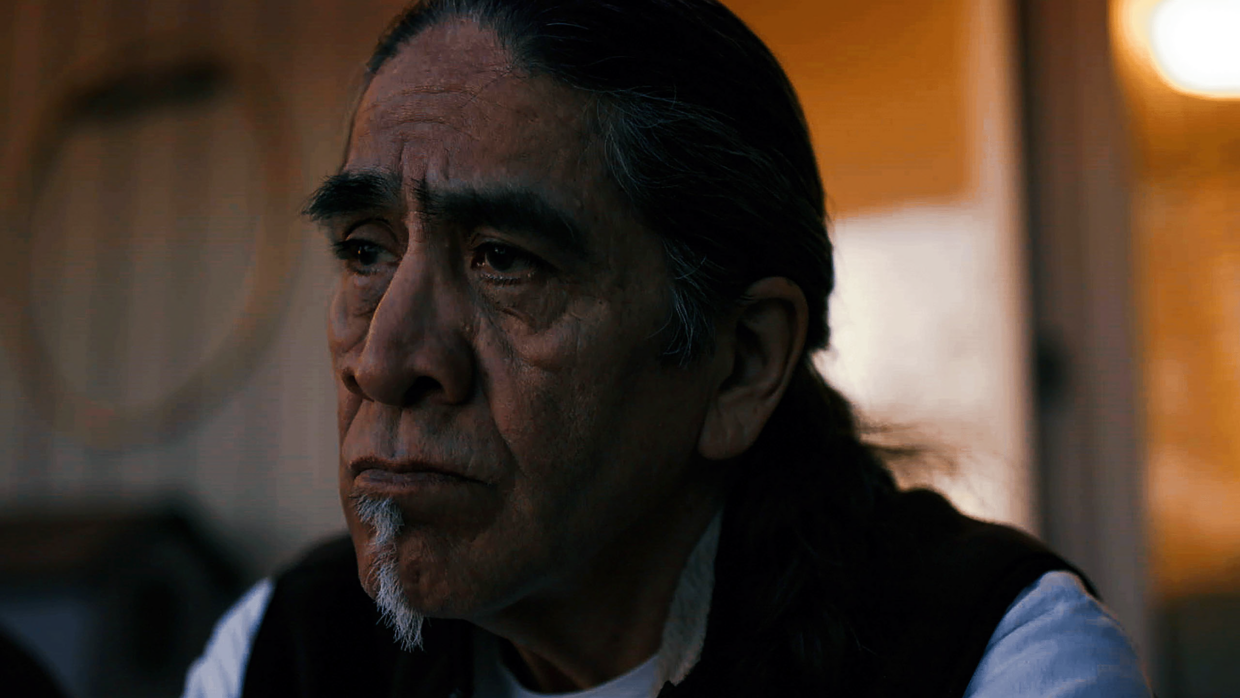 Back to selection
Back to selection
“The Dichotomy of Worlds Held in This One Place” | Julian Brave NoiseCat & Emily Kassie, Sugarcane
 Still from Sugarcane. Courtesy of Sundance Institute. | Photo by Emily Kassie
Still from Sugarcane. Courtesy of Sundance Institute. | Photo by Emily Kassie Films are made of and from places: the locations they are filmed in, the settings they are meant to evoke, the geographies where they are imagined and worked on. What place tells its own story about your film, whether a particularly challenging location that required production ingenuity or a map reference that inspired you personally, politically or creatively?
Williams Lake, named after the Secwépemc Chief William, stretches five miles across the Cariboo in the rugged interior of British Columbia, Canada. On the southside of the lake there’s the Sugarcane Indian Reserve, home to William’s people. On the other, there’s the city of Williams Lake, a cow town that’s home to the Williams Lake Stampede, once the second-largest rodeo in Canada. To this day, the cowboys and Indians are locked in a standoff on opposite sides of the lake. It’s a setting fit for a western.
Sugarcane was inspired by the dichotomy of worlds held in this one place, where cowboys, Indians and Indian cowboys ride bulls, work the land and tussle over whose culture and history—whose version of events—truly belongs. This is a place where the Church is at once despised and revered; where logging, mining and ranching are king—except when the untamable inferno of forest fires and floods get their say; and where the Secwépemc have been rooted in place since Creation—or at least since the creation of this colony called British Columbia and its system of missions and Indian reserves. The contradictions of this place are the DNA of Sugarcane. They run through the backdrop of the film as well as the journeys of our protagonists, colliding at places both epic and everyday: the stampede, the sawmill, the local Tim Horton’s, the old church on the Sugarcane Indian reserve.
See all responses to our annual Sundance Question here.
